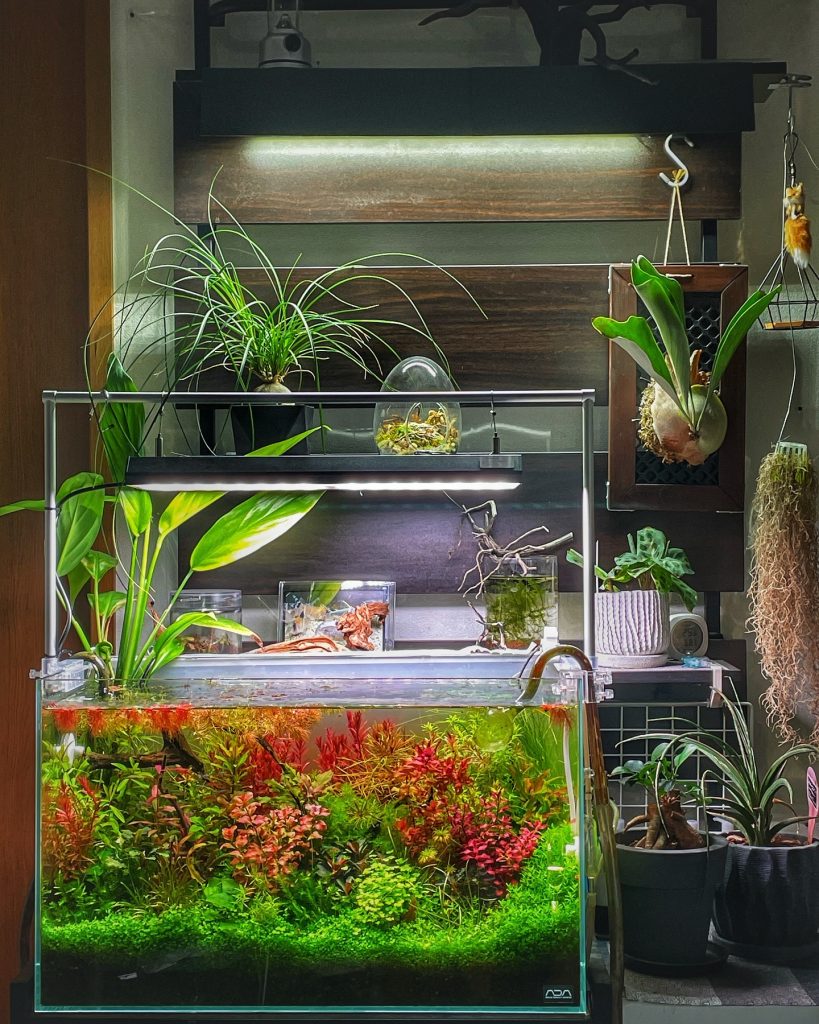Welcome to a mesmerizing journey through 100 breathtaking planted aquariums that will ignite your imagination and inspire your aquascaping endeavors. Planted aquariums are more than just fish tanks; they are living works of art, intricately designed ecosystems that bring the beauty of nature into your home.
In this curated collection, you’ll discover a diverse array of aquascapes, from lush underwater forests to minimalist zen gardens. Each aquarium tells a unique story, showcasing the creativity and passion of its creator.
Whether you’re an experienced aquarist seeking new ideas or a beginner eager to dive into the world of aquascaping, these stunning aquariums will captivate your senses and fuel your desire to create your own aquatic masterpiece.
Get ready to be transported to a world of tranquility, beauty, and endless inspiration as we explore 100 gorgeous planted aquariums that will leave you in awe.
Guide to Making a Planted Aquarium
Creating a planted aquarium is a rewarding and captivating endeavor that allows you to bring the beauty of nature into your home while providing a thriving habitat for aquatic life. Whether you’re a beginner or an experienced aquarist, follow these steps to create your own stunning planted aquarium:
1. Planning Your Aquarium
- Select Tank Size: Choose a tank size that fits your space and budget. Larger tanks provide more stability and room for creativity, but smaller tanks can be equally beautiful with proper care.
- Choose a Location: Place your aquarium in a location with stable temperature, away from direct sunlight and drafts. Ensure it has a sturdy, level surface to support the weight of the tank.
- Research: Spend time researching different plant species, fish, and equipment options. Consider the compatibility of plants and fish, as well as their care requirements.
2. Setting Up the Aquarium
- Tank Setup: Clean the tank with water and a non-toxic aquarium-safe cleaner. Add a layer of substrate (gravel, sand, or specialized plant substrate) to the bottom of the tank.
- Hardscape: Arrange hardscape elements such as rocks, driftwood, or decorations to create a visually appealing layout. Consider using the “rule of thirds” for balanced placement.
- Filtration: Install a suitable filter for your tank size and stocking level. A filter helps maintain water quality by removing debris and providing aeration.
- Heating and Lighting: Install a heater to maintain a stable temperature suitable for your chosen fish and plants. Choose appropriate lighting to support plant growth, typically full-spectrum LED lights with a timer for consistency.
3. Adding Plants
- Selecting Plants: Choose a variety of plant species that are suitable for your tank size, lighting, and water parameters. Consider foreground, midground, and background plants to create depth and interest.
- Planting: Plant your aquarium carefully, taking care not to damage the roots or stems. Use planting tools if necessary to reach into the substrate and create a visually pleasing layout.
- Maintenance: Regularly trim and prune your plants to prevent overgrowth and maintain their shape. Remove any dead or decaying plant matter promptly to prevent water quality issues.
4. Adding Fish and Invertebrates
- Fish Selection: Choose fish species that are compatible with your selected plants and water parameters. Consider the size of your tank and the behavior of the fish when stocking your aquarium.
- Invertebrates: Consider adding shrimp, snails, or other invertebrates to help maintain the ecosystem balance and control algae growth. Research compatibility with your chosen fish species.
5. Water Parameters and Maintenance
- Water Testing: Regularly test the water parameters, including pH, ammonia, nitrite, and nitrate levels, using a reliable test kit. Aim for stable and suitable conditions for your plants and fish.
- Water Changes: Perform regular water changes to remove accumulated waste and replenish essential nutrients. Aim for weekly or bi-weekly water changes of 10-20% of the tank volume.
- Fertilization: Depending on your plant species and substrate, consider adding liquid or substrate fertilizers to provide essential nutrients for healthy plant growth.
6. Enjoying Your Planted Aquarium
- Observation: Take time to observe and enjoy your planted aquarium regularly. Watch your fish and plants thrive in their naturalistic environment.
- Experimentation: Don’t be afraid to experiment with different plant species, aquascaping techniques, and fish combinations. Every aquarium is unique, and there’s always room for creativity and improvement.
- Community: Join online forums, local clubs, or social media groups to connect with other aquarists, share experiences, and learn from each other’s successes and challenges.
By following these steps and investing time and effort into your planted aquarium, you’ll create a stunning aquatic ecosystem that brings joy and tranquility into your home for years to come.

























































































































































































